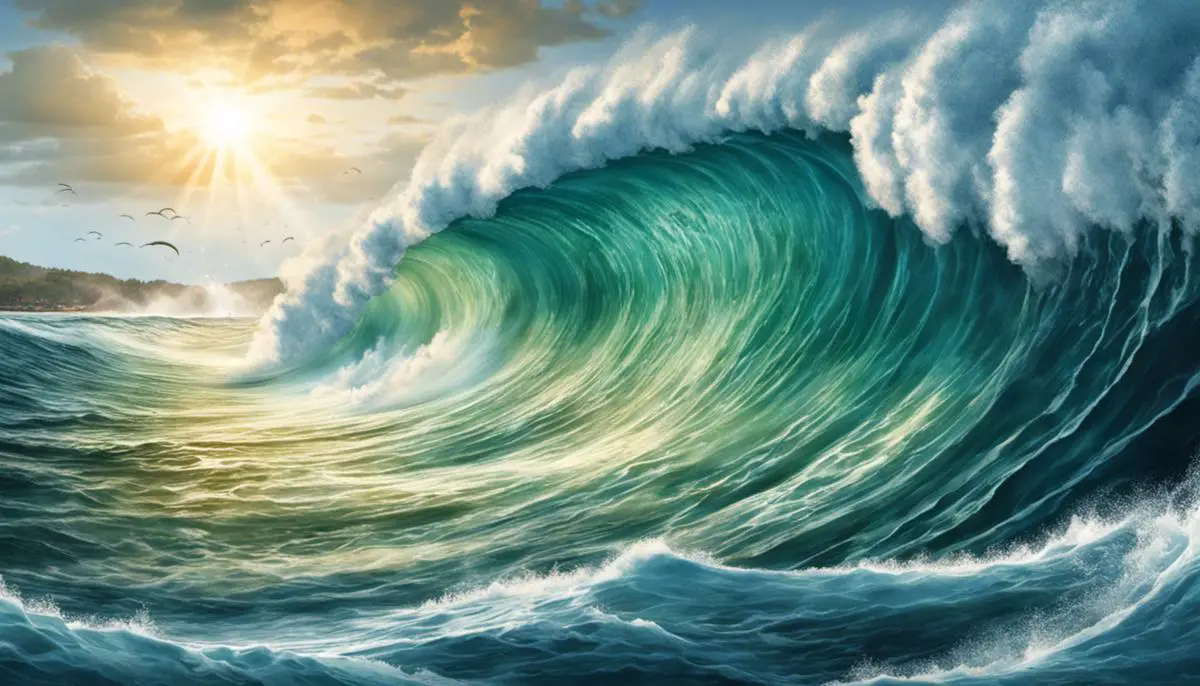The mysterious and catastrophic nature of tsunamis has left an indelible mark on human civilization through the ages. As surprising as they may seem, these seismic sea waves are not random acts of nature. They are instead intricate physical phenomena, hued by geologic processes and powered by the Earth’s boundless dynamics, unpredictable yet in some way forecastable. This discourse delves into the science of tsunamis, their history, the predictions for potential threats in 2023, and the mechanisms in place for preparedness and mitigation. Learn about their causes, gain an understanding from past significant events and equip yourself with knowledge on how to stay safe during this powerful display of nature’s force.
Understanding Tsunamis
What Are Tsunamis?
Tsunamis are large, powerful, and destructive sea waves that are caused by submarine geological activities. These activities often include underwater earthquakes, landslides, volcanic eruptions, or meteorite impacts. It’s essential to note that not all seismic activities cause tsunamis—only ones that significantly displace the ocean floor can lead to a tsunami event.
How Do Tsunamis Form?
For a tsunami to form, there must be a displacement of a substantial volume of water in the ocean or sea. This displacement is usually triggered by seismic events beneath the ocean floor. The abrupt motion of these events—such as the sudden rising or falling of the seafloor during an earthquake—pushes against the overlaying water, triggering powerful waves to ripple across the sea surface. These waves can travel at high speeds, depending on the depth of the water, and cover vast distances.
Primary Causes of Tsunamis
Tsunamis are primarily caused by undersea earthquakes. An earthquake becomes capable of generating a tsunami when it meets certain criteria. First, it has to be a submarine earthquake—occurring beneath the ocean floor. Secondly, it must be a strong quake, usually above magnitude 7 on the Richter scale. Finally, the earthquake has to displace the seafloor vertically, either by thrusting it upwards or downwards.
Volcanic eruptions can also generate tsunamis, particularly in regions with undersea volcanic activity. The intense energy released during the eruption can displace water, triggering a tsunami. Similarly, underwater landslides—either triggered by seismic activity or occurring independently—can move large amounts of ocean bed sediments, which can cause tsunamis.
The Science Behind Tsunami Formation and Strength
Tsunamis retain their energy, meaning they can travel across entire ocean basins with little energy loss. Once generated, a tsunami wave moves outwards in all directions, and its speed depends on the depth of the water. As it approaches the coast, the shallower waters slow the wave’s speed but increase its height, turning it into a towering front of water that can cause extensive damage upon impact.
Tsunamis are a series of waves or wave train. The initial wave is rarely the strongest; successive waves get larger and stronger, often with chaotic, complex wave patterns causing destructiveness to amplify.
Common Misconceptions About Tsunamis
A common misconception about tsunamis is that they are tidal waves. While ‘tidal wave’ was historically used as a synonym for ‘tsunami’, it is misleading. Tides are the result of gravitational interactions between the Earth, the moon, and the sun, while tsunamis result from geological disturbances.
Another misconception is that a tsunami is a single, cresting wave. In reality, a tsunami is a series of waves known as a wave train, with each wave capable of causing destruction. The first wave may not be the most damaging; successive waves can be stronger.
Anticipating Tsunami Threats in 2023
With the Earth’s steady geological transformations, the possibilities for tsunami threats remain quite real, especially in 2023. These threats are derived from the same seismic factors that have generated tsunamis throughout history. Particularly, the regions that are prone to significant seismic activities, such as the Pacific Ring of Fire, the shorelines of the Mediterranean Sea, the Indian Ocean, and the Caribbean, present a potential cause for concern.
Forefront in counteracting the danger of tsunamis is the emphasis on timely warning systems and efficient preparedness on a community level. It is imperative to invest in advanced earthquake monitoring technologies and reliable alert mechanisms, coupled with extensive community education on tsunami readiness. These actions are critical to keeping the destructive aftermath of such natural disasters to a minimum in 2023 and the years following.
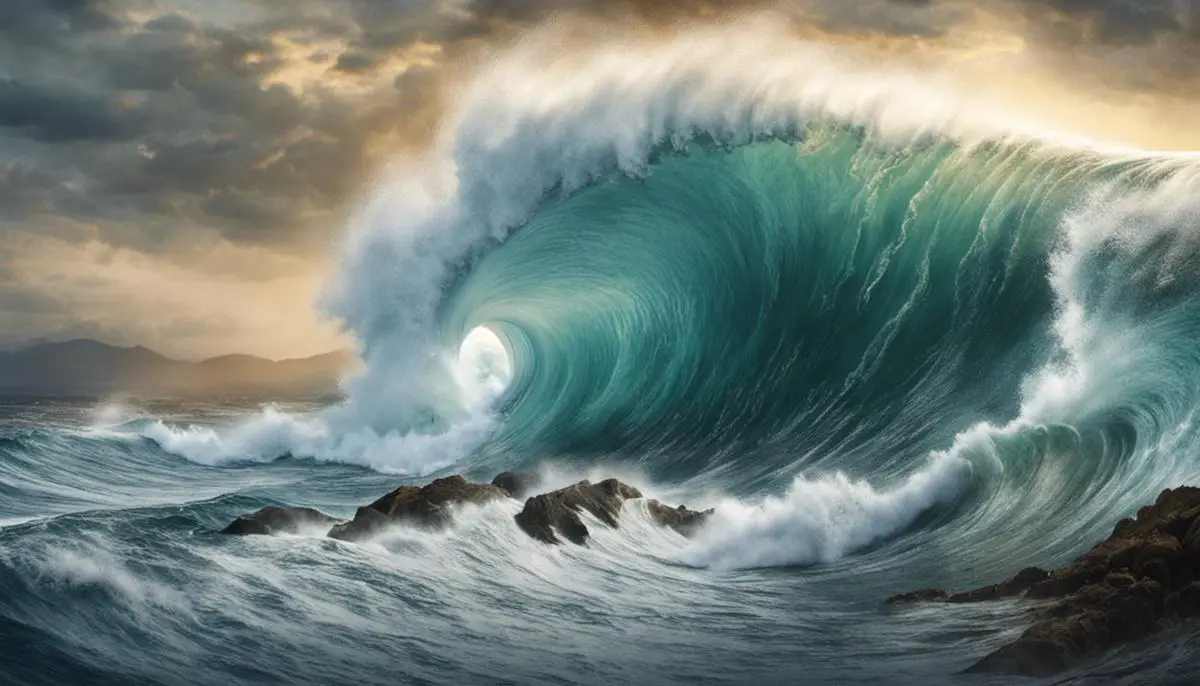
Previous Tsunami Events
Learning from History: Important Tsunami Occurrences
One cannot forget the devastation caused by the Boxing Day tsunami in 2004, which emerged as a result of the third largest earthquake in recorded human history. This earthquake, with a magnitude of 9.1-9.3 off the Northern Sumatra coast, instigated destructive waves that ended the lives of an estimated 230,000 – 280,000 individuals across 14 countries bordering the Indian Ocean, underlining the global effect of tsunamis.
These waves were alarmingly potent, reaching heights up to 30.5 meters in some sections. Coastal areas were particularly damaged; this includes the province of Aceh in Indonesia, the well-known tourist city of Phuket in Thailand, and the Eastern Coast of Sri Lanka. These regions saw an overwhelming level of destruction, with numerous buildings and community-infrastructure devastated.
The 2011 Tohoku Earthquake and Tsunami: Devastation in Japan
In more recent history, the 2011 Tohoku earthquake and tsunami off the Pacific coast of Japan was another major event that emphasized the dangers of tsunamis. This event had an undersea megathrust earthquake with a magnitude of 9.0-9.1, making it the most powerful earthquake ever recorded in Japan and the fourth most powerful in the world since modern record-keeping began.
The tsunami triggered by this earthquake was incredibly destructive, with waves reaching heights of up to 40.5 meters in Miyako city and traveling up to 10 kilometers inland in Sendai. It resulted in about 15,899 deaths, 6,157 injuries, and 2,529 people missing across twenty prefectures. Additionally, it triggered nuclear meltdowns at the Fukushima Daiichi Nuclear Power Plant, resulting in ongoing environmental and health concerns.
Historical Insights for Future Tsunami Threats
Historical analysis of tsunamis becomes our guiding compass to anticipate and manage potential hazards. Factors like ocean depth, water temperature, and geographical landscape of coastal cities notably influence the magnitude of tsunamis. Recognizing these elements can aid us in discerning problematic seismic activity and marking potential tsunami hazards.
For example, areas near the boundaries of tectonic plates often face the risk of experiencing high-grade earthquakes, inducing tsunamis subsequently. In the same vein, coastlines featuring shallow sea floors with gentle slopes may grapple with extensive flooding amid tsunami events.
With technological advancements allowing greater data monitoring and analysis, we can employ early warning systems and disaster mitigation strategies. Comprehension of the potential extent of tsunami damages across various global regions becomes key in forecasted threats such as the potential ones in 2023.
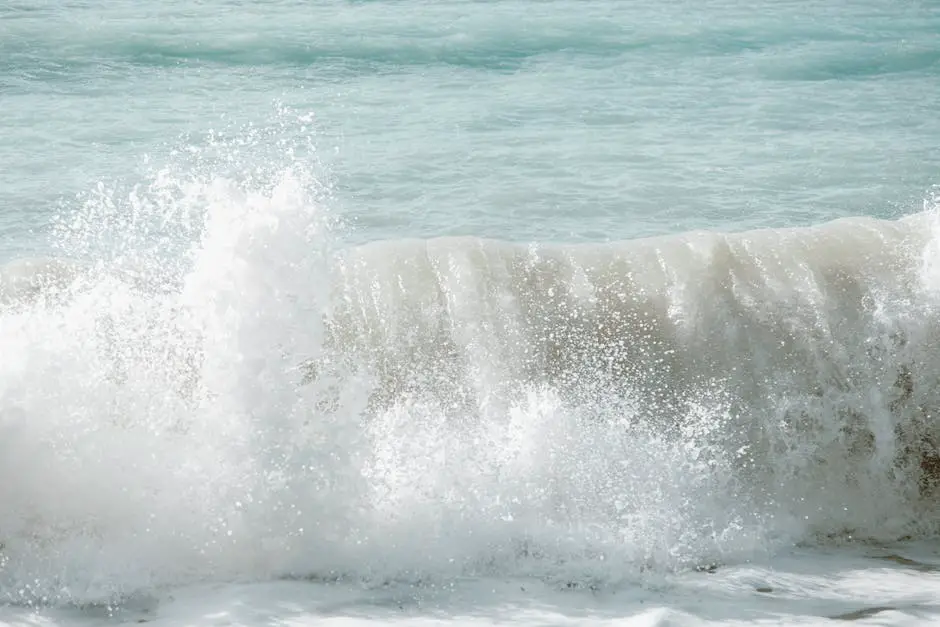
Tsunami Threat Predictions for 2023
Comprehending the Tsunami Threats
Tsunamis, primarily triggered by underwater seismic activity or occasionally by landslides, volcanic eruptions, and meteor impacts, pose a substantial threat to life and property. These natural disasters have a devastating effect on coastal territories, resulting in profound human and material losses. With the tragedies of the Indian Ocean Tsunami in 2004 and the Japan Tsunami in 2011, global understanding and concern regarding tsunamis have dramatically escalated in the 21st century.
Predicting Tsunami Threats
Creating a forecast to predict tsunamis is a difficult task as it is challenging to pinpoint the timing and magnitude of these natural disasters. However, scientists use multiple models, rely on historical geological data, and closely monitor current seismic activity to provide as accurate predictions as possible. Seismic activity plays a significant role in tsunami predictions as undersea earthquakes are by far the largest cause of tsunamis.
Climate Change Influence
Climate change impacts may heighten the frequency and intensity of tsunamis. Rising sea levels, a result of global warming, can exacerbate the impact of tsunamis, making them more deadly and damaging. Especially in low-lying coastal areas, the results could be particularly devastating as these areas could face extended periods of flooding.
Potential Tsunami Threat Areas in 2023
Based on geological data and seismic activity, the Pacific Ring of Fire is a major area to monitor in 2023 for potential tsunami threats. This region includes several nations from Asia, including Japan and Indonesia, to North and South America. Similarly, nations along fault lines such as the San Andreas Fault in California should be especially vigilant about the possibility of tsunamis. Coastal areas in Southeast Asia, like Indonesia and the Philippines, are also historically prone to tsunamis and should maintain a state of preparedness.
Impact of Anticipated Tsunamis
If a large-scale tsunami event occurs in 2023, the impacts could potentially be devastating, particularly for communities in vulnerable regions. Damages could include loss of life, destruction of homes, buildings, infrastructure and disruption of economic activities. Linear infrastructure such as roads, railways, pipelines, and power lines close to the shore could get significantly affected. Furthermore, displacement of population and long-term psychological impacts are other unfortunate repercussions.
Advancements in Tsunami Predictions And Preparedness
Scientists continue to make strides forward in improving the accuracy of tsunami warnings. Some utilize GPS technology while others rely on seismic readings or models that simulate how tsunamis will travel across the ocean. Technological advancements in early warning systems have equipped us better today than ever before at issuing timely warnings. The need of the hour is to ensure these systems are widespread and robust.
The Importance of Preparedness for Potential Tsunamis
The odds of facing a tsunami can be daunting. However, the right combination of disaster-resilient infrastructure, effective early warning systems, and well-executed evacuation plans can significantly minimize loss and enhance safety. The technological and infrastructural investments made by nations play a crucial role. Still, the involvement and education of communities in disaster response procedures is equally important – a collective response powered by knowledge and resources is the key to enduring such catastrophes.
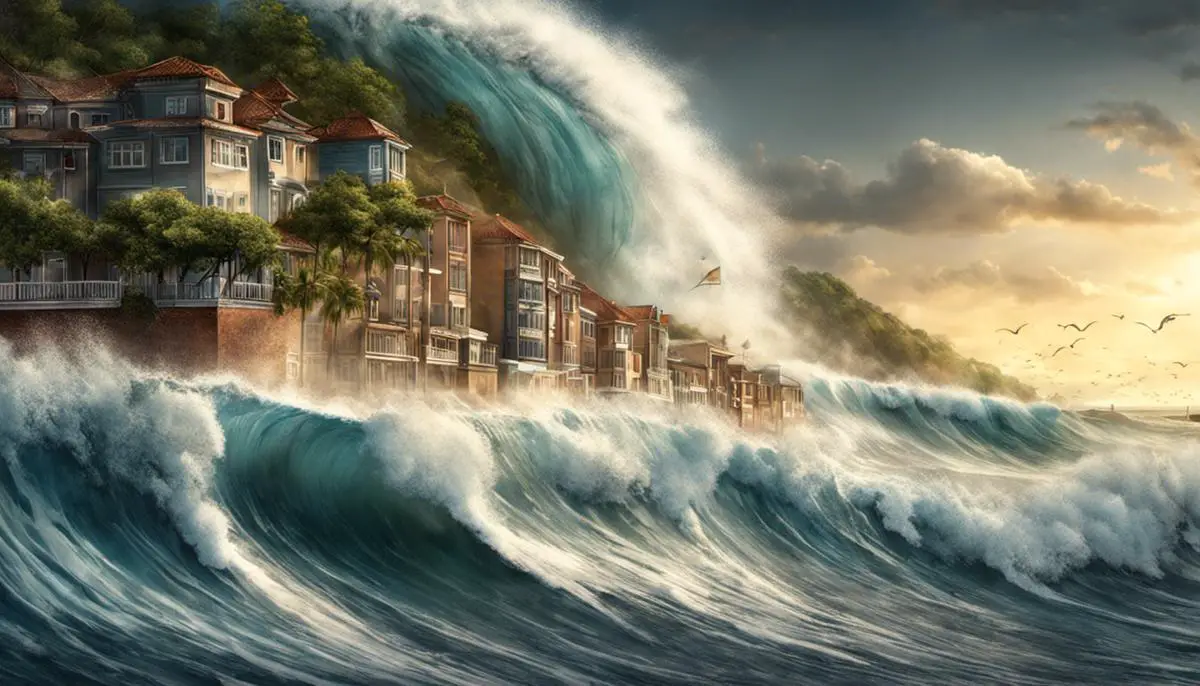
Preparedness and Mitigation Measures
Getting to Know Tsunamis
A tsunami can be described as a succession of massive waves triggered by the displacement of an enormous volume of sea water. This displacement can occur due to a variety of natural activities – underwater earthquakes, landslides, volcanic eruptions, even meteor impacts. These events can wreak havoc on coastal regions, leading to a horrifying destruction of both human life and property. In 2023, the risk of tsunamis remains high, especially in areas prone to seismic activities like the Pacific Rim and other similar global regions. Therefore, it becomes imperative that appropriate preparedness measures and contingency plans be well established and maintained.
Preparedness and Mitigation Exploration
Governmental bodies and organizations dedicate significant efforts to tsunami preparedness and mitigation. These measures include the development of comprehensive tsunami action plans, improved seismic monitoring systems, tsunami warning communication, and comprehensive disaster management planning. The National Oceanic and Atmospheric Administration (NOAA), for example, maintains a network of tsunami sensors that continuously monitor any seismic activities around the world that could potentially trigger tsunamis. These sensors enable early warning notifications to potentially affected regions, which play a crucial role in saving lives.
Importance of Community Awareness
Community awareness is another crucial factor in managing potential tsunami threats. In areas prone to tsunamis, many local governments provide residents with resources and training on tsunamis, including their causes, signs, and safety measures to take during such events. This education plays a massive role in people’s responses when a tsunami threat emerges. If individuals are aware of the possible impending danger, they are more likely to react quickly and appropriately, helping to save their lives and those of others.
Importance of Individual Preparedness
In addition to collective preparedness and awareness, individual preparedness is equally important in the face of a tsunami threat. Individual preparedness can involve knowing the nearest evacuation route, having an emergency kit ready with essential supplies, and understanding the difference between a tsunami warning and a tsunami advisory. A tsunami warning means that a tsunami may have been generated and could impact the area imminently. In contrast, a tsunami advisory indicates that there is a potential for strong currents or waves dangerous to those in or near the water.
Evacuation and Safety Guidelines
In the event a tsunami warning is issued, individuals should immediately move to higher ground or as far inland as possible. It is recommended to stay away from the beach or any other low-lying coastal areas. Once a tsunami warning has been lifted, it’s crucial to wait for official information before returning to potentially affected areas due to the possibility of subsequent waves or changes in the terrain due to the initial wave’s impact.
Putting these preparedness and mitigation measures into action requires sustained effort and collaboration among governments, organizations, communities, and individuals. By staying aware and prepared, we indeed stand a better chance of minimizing the threat posed by tsunamis in 2023 and beyond.
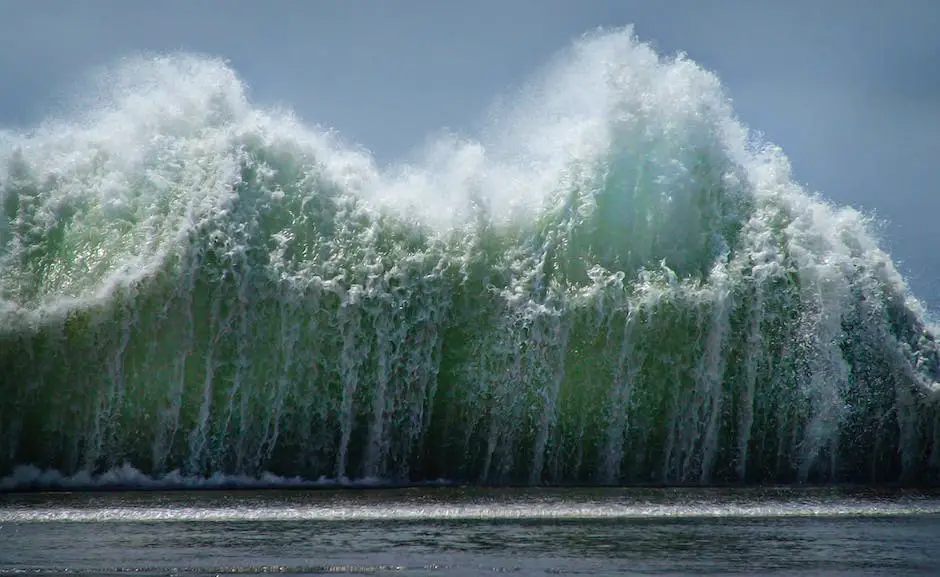
The power of a tsunami is almost incomprehensible, but understanding how it forms, occurs, and the effects it has on our world is the first line of defense. By analyzing past events, we are better equipped to predict future threats, especially those in 2023. Crucially, staying ahead of the curve requires being informed and prepared. Awareness through education and effective communication of the risks and safety measures can make a difference between devastation and survival. Undeniably, tsunamis remain a significant threat, but with proper knowledge and preparation, we as a society can minimize their toll on human life and infrastructure. As inhabitants of a planet rich with dynamic geologic activity, it falls to us to respect nature’s fury while arming ourselves with the knowledge to stand resilient in the face of such disasters.
FAQ
Can a tsunami be predicted?
It is a difficult scientific task to predict tsunamis since it requires observing and analyzing a variety of natural phenomena. Scientists evaluate the possibility of tsunami-generating events using seismological data, oceanic monitoring, and historical patterns, even though precise tsunami predictions are impossible. Since underwater earthquakes have the potential to cause tsunamis, seismic activity is constantly monitored in earthquake-prone areas. Modern oceanographic instruments also monitor variations in water pressure and sea level that could portend the arrival of a tsunami. Even with these efforts, it is still difficult to predict the exact time and size of a tsunami. For this reason, early warning systems concentrate on quickly identifying seismic activity and alerting coastal communities so they have the critical minutes to evacuate and minimize potential damage. Technological developments and ongoing research are improving our knowledge of tsunami dynamics, with the goal of making future predictions more accurate and timely.
How big can a tsunami get?
The size of tsunamis can vary greatly based on the factors that cause them to occur. The height of the wave from its trough to its crest, or amplitude, is a common way to gauge the size of a tsunami. Larger tsunamis can reach astounding heights, while smaller ones may only have an amplitude of a few centimeters. The strongest tsunamis are usually linked to large-scale underwater quakes or volcanic eruptions. When this happens, tsunamis have the potential to amplify to incredible heights, reaching heights of up to 30 meters (100 feet). With waves that in certain places reached heights of more than 30 meters, the 2004 Indian Ocean tsunami—which was caused by an earthquake of magnitude 9.1–9.3 off the coast of Sumatra—is a tragic illustration of the devastation that can result from massive tsunamis. Even though these extreme occurrences are rather uncommon, it’s crucial to remember that they highlight the significance of early warning systems and readiness in coastal areas that are susceptible to tsunami threats.
What is the number 1 worst tsunami?
One of the most catastrophic tsunamis in recorded history, the 2004 Indian Ocean tsunami is frequently ranked as the worst tsunami ever in terms of its extensive effects. The December 26, 2004, massive undersea earthquake off the coast of Sumatra, with a magnitude of 9.1–9.3, caused a tsunami that hit several countries bordering the Indian Ocean, including India, Thailand, Indonesia, and Sri Lanka. Between 230,000 and 280,000 people lost their lives as a result of the waves, which in some places reached heights of over 30 meters. The waves also severely damaged many coastal communities. The 2004 tsunami in the Indian Ocean prompted attempts to strengthen international collaboration in tsunami monitoring and mitigation, as well as brought attention to the need for better international early warning systems.
How tall was the 2004 tsunami?
In certain places, the 2004 Indian Ocean tsunami—which was caused by a massive underwater earthquake off the coast of Sumatra—reached unbelievable heights. This catastrophic event produced waves of extraordinary proportions; in some coastal regions, reports have indicated that the waves reached heights of over 30 meters, or roughly 100 feet. The enormous scope of the tsunami led to its catastrophic effects on neighboring nations such as Indonesia, Thailand, Sri Lanka, India, and others. The 2004 tsunami’s unparalleled height highlighted the devastation that can occur from these natural disasters and the significance of having strong early warning systems and preparation measures in place in coastal areas that are vulnerable.
How tall is a mega tsunami?
When a massive landslide into the ocean or an underwater volcanic eruption is connected to a catastrophic event, the term “mega tsunami” is frequently used to describe extremely large and destructive tsunamis. While a mega tsunami’s height can vary greatly, in general, it refers to waves that are substantially larger than those produced by more frequent tsunami sources. Mega tsunamis can reach heights significantly higher than those usually observed in regular tsunamis, though there is no set height threshold that characterizes these events. A mega tsunami’s potential height would be influenced by various elements, including the size of the triggering event and the features of the underlying oceanic or geological processes. Mega tsunamis are studied by scientists and are frequently linked to extreme natural phenomena because of how infrequently they occur.
![]()
